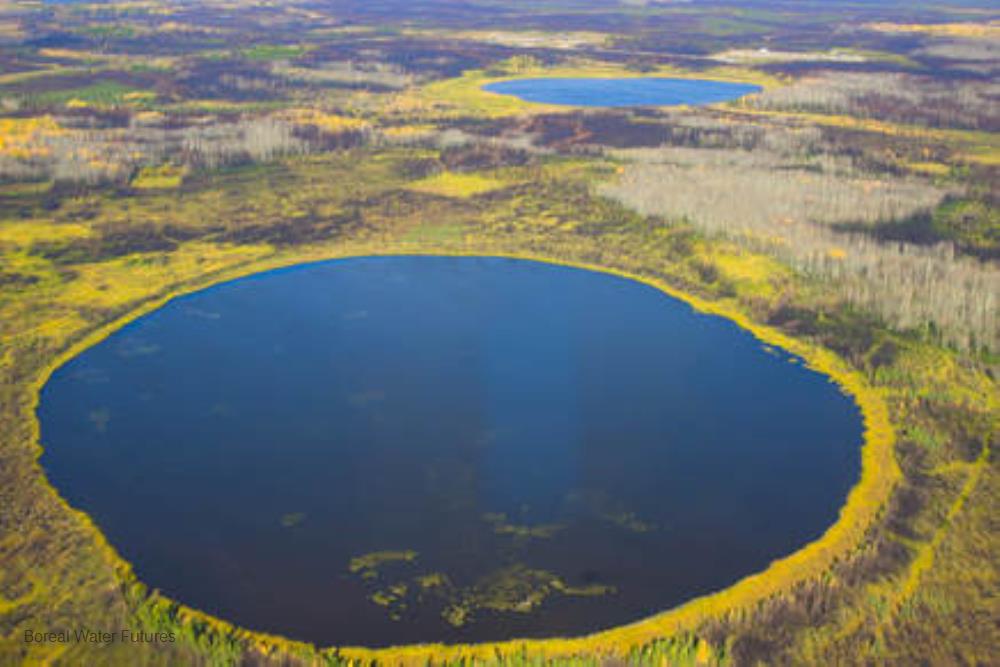Data Lineage (if applicable). Please include versions (e.g., input and forcing data, models, and coupling modules; instrument measurements; surveys; sample collections; etc.)
METHODOLOGICAL INFORMATION
--------------------------
This information is described in detail in the following papers:
References:
Amiro, B. D., Barr, A. G., Black, T. A., Iwashita, H., Kljun, N., McCaughey, J. H., Morgenstern, K., Murayama, S., Nesic, Z., Orchansky, A. L., & Saigusa, N. (2006). Carbon, energy and water fluxes at mature and disturbed forest sites, Saskatchewan, Canada. Agricultural and Forest Meteorology, 136, 237-251.
https://doi.org/10.1016/j.agrformet.2004.11.012
Barr, A. G., van der Kamp, G., Black, T. A., McCaughey, J. H., & Nesic, Z. (2012). Energy balance closure at the BERMS flux towers in relation to the water balance of the White Gull Creek watershed 1999-2009. Agricultural and Forest Meteorology, 153, 3-13.
https://doi.org/10.1016/j.agrformet.2011.05.017
Cuenca, R. H., Stangel, D. E., & Kelly, S. F. (1997). Soil water balance in a boreal forest. Geophysical Research, 102(D24), 29355-29365.
https://doi.org/10.1029/97jd02312
Hejazi, A., & Woodbury, A. D. (2011). Evaluation of land surface scheme SABAE-HW in simulating snow depth, soil temperature and soil moisture within the BOREAS site, Saskatchewan. Atmosphere̶Ocean, 49:4, 408-420,
https://doi.org/10.1080/07055900.2011.587238
1. Description of methods used for collection/generation of data:
Air temperature and precipitation were measured at BERMS Old Jack Pine site using temperature/humidity probes (Vaisala model HMP45C) mounted in radiation shield above the canopy and an accumulating gauge (Belfort model 3000), respectively.
Incoming shortwave and longwave radiation were measured at BERMS Old Jack Pine site using a pyranometer (Kipp and Zonen model CM11) and a pyrgeometer (Eppley model PIR). Wind speed and direction were measured at BERMS Old Jack Pine site using a RMY Propeller Anemometer Model 05103.
Barometric pressure was measured using a Setra Model 270 Barometer. Specific humidity was derived from the measurements of air temperature, relative humidity and barometric pressure.
Soil temperature was measured at BERMS Old Jack Pine site using Cu-Co thermocouple sensor at 2, 5, 10, 20, 50 and 100 cm soil depth (Hejazi and Woodbury, 2011)(See the reference above).
The soil volumetric water content was measured at BERMS Old Jack Pine site using soil moisture reflectometers (Campbell Scientific CS615 probes) at 0-15, 15-30, 30-60, 60-90, 90-120 and 120-150 cm depth.
Evapotranspiration was measured at BERMS Old Jack Pine site using the eddy-covariance method, with an energy balance closure adjustment applied. For more detailed explanation about the collection of data, see the reference above (Barr et al. 2012).
2. Methods for processing the data:
Gaps in evapotranspiration data were filled using the Fluxnet-Canada gap-filling method as described by Amiro et al. (2006) (the reference above).
3. Instrument- or software-specific information needed to interpret the data:
The evapotranspiration data were adjusted to force surface-energy-balance closure using an energy-closure fraction of 0.85, i.e. Adjusted ET = Measured ET / 0.85. This was an objective adjustment based on Barr et al. (2012) (above).
4. Standards and calibration information, if appropriate: n/a
5. Environmental/experimental conditions: n/a
6. Describe any quality-assurance procedures performed on the data:
"Three factors reduced the uncertainties including the analysis of multiple years of data from multiple sites; the tendency of change in soil water storage to become small when averaged over many years; and the careful design of the measurement systems to eliminate systematic errors.
The design features included: use of high-quality radiometers with frequent calibration and no signs of calibration drift; careful measurement of the surface energy storage fluxes; use of closed-path, short-tube eddy-covariance systems with high flow rates through temperature-controlled gas analyzers;
careful processing and quality assurance of the eddy-covariance data; use of accumulating precipitation gauges located in small forest clearings in near-optimal conditions to minimize undercatch; complete measurements of soil water storage including root-zone water content and water table depth; and frequent maintenance of the streamflow gauge.
The sites in this study were all continental, with level topography and uniform fetch; all had high-quality measurements of surface available energy; and all used standardized eddy-covariance instrumentation and data-processing software." (Barr et al. 2012).
For more detailed explanation about quality-assurance procedures performed on the data, see the reference above (Barr et al. 2012).


 GWFNet
GWFNet Master
Master Data
Data Research
Research Map
Map
 Advanced
Advanced Tools
Tools
 . . .
. . .
 Metadata Editor
Metadata Editor
 Record List
Record List
 Alias List Editor
Alias List Editor
 Legacy sites
Legacy sites